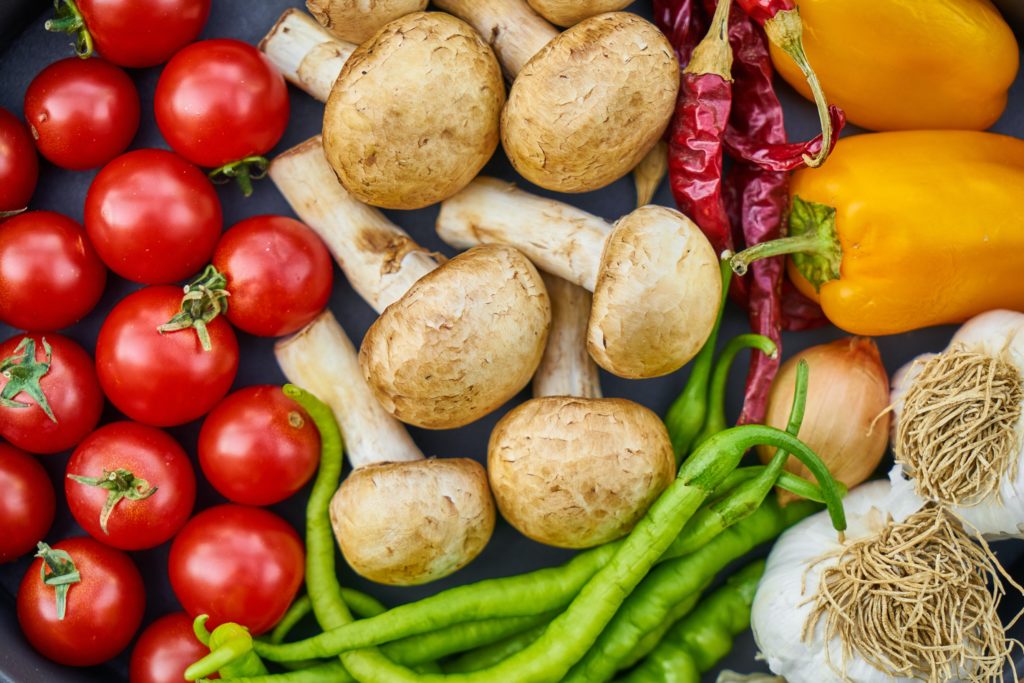
Nutritionists, models and other adherents of a healthy lifestyle often recall the well-known life hack: the vegetable part of the dish should take up at least half of the plate. Celebrities like Gwyneth Paltrow and Oprah Unfrey publish books with healthy recipes, while we are learning to distinguish kale from iceberg lettuce. And no matter how difficult it is sometimes to force yourself to eat another carrot instead of a fancy sweet potato, one piece of advice is extremely important: there is nothing better than local seasonal vegetables.
Pumpkin
Pumpkin, like most vegetables, is a carrier of a wide range of vitamins and minerals, while limiting itself to a low calorie content. A distinctive feature of pumpkin is beta-carotene (hence the bright orange color), which, in the process of assimilation, turns into vitamin A – one of the most important for the human body, responsible for healing, recovery and skin renewal processes. Pumpkin is also a good source of potassium, vitamin C, fiber and antioxidants, which are important for healthy heart and cardiovascular health.
What to pair with: Pumpkin is spicy, sweet and soft (unless you eat it raw). It goes well with cream, ricotta, Greek yogurt and sour cream.
Beet
Beetroot has a positive effect on the gastrointestinal tract, and recent studies have shown that certain pigments contained in vegetables can affect the reduction in the growth of cancer cells. It became known about the effect of beets on the cognitive functions of the brain. For example, certain nitrates can help increase blood flow to the brain, improving brain function and possibly lowering the risk of dementia.
What to combine with: beets have a characteristic taste and color, which, admittedly, are not for everybody. If you want to give beetle a chance (or just experiment with your favorite vegetable), try pairing it with different oils, such as mustard, olive, or sesame. For a more complex combination, use your favorite herbs and spices.
Cabbage
Cabbage is a very diverse vegetable. His family includes both the well-known white cabbage and broccoli, cauliflower and kale. The color palette also ranges from light green and white fruits to bright blue and lilac. The main value of cabbage is concentrated on vitamin C, which is the strongest antioxidant and most of all in red cabbage. Lowering cholesterol levels, lowering blood pressure and beneficial effects on the gastrointestinal tract are on the list of benefits of this vegetable.
What to pair with: Collard greens are great in salads, blending harmoniously with other crispy vegetables. For a warmer serving, cabbage, cauliflower, cauliflower or broccoli, can be baked in the oven with olive oil and spices, then sprinkled with Parmesan cheese on top.
Eggplant
Apart from its mild flavor and unique texture, eggplant has several health benefits. For example, these blue (and also red, green and black) vegetables are rich in fiber and polyphenols, which help in lowering blood sugar levels. There are just over 20 calories per 100 g of raw eggplant. Scientists are still conducting research, but there is a possibility that some elements in the composition of eggplant may help in the treatment of cancer.
What to pair with: Eggplants can taste bitter, so they are usually soaked in water (sometimes with salt) for several hours. Baked eggplant with olive oil and aromatic herbs is considered universal. A good duet for eggplant is garlic with low-fat cottage cheese.
Bell pepper
The main ingredients of sweet peppers are water and carbohydrates. Bell peppers are also a good source of fiber and vitamins such as vitamin C, vitamin K1 (responsible for blood clotting and bone health), vitamin E (responsible for muscle and nerve health), and vitamin A (this is the one found in pumpkin).
What to pair with: Bell peppers can be eaten raw or cooked. It is pleasant for them to crunch in a bite to hummus, cheese or meat plate.




